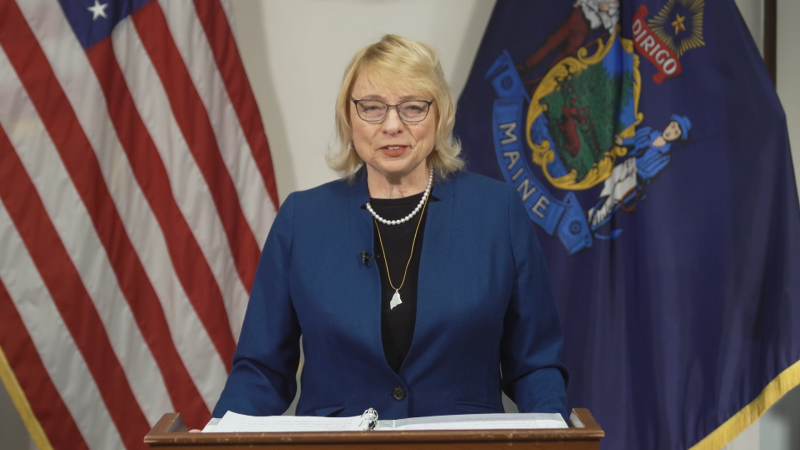AUGUSTA — Governor Janet Mills has signed into law LD 1619, which prohibits new offshore wind projects in State waters.
The prohibition, according to a news release, preserves State waters for recreation and fishing – where up to 75 percent of Maine’s commercial lobster harvesting occurs – and cements into law Maine’s priority of locating offshore wind projects in federal waters in the Gulf of Maine.
The new law comes after Governor Mills last month signed into law another bill, LD 336, which advances the State’s creation of the nation’s first research area for floating offshore wind in federal waters of the Gulf of Maine.
The Governor applauded the strong bipartisan support from the Maine Legislature to advance Maine’s unique position to grow a global offshore wind industry, which will create good-paying jobs for Maine people, support Maine’s transition to 100 percent renewable energy, and help fight climate change.
“Maine is uniquely prepared to grow a strong offshore wind industry, create good-paying trades and technology jobs around the state, and reduce our crippling dependence on harmful fossil fuels. This legislation cements in law our belief that these efforts should occur in Federal waters farther off our coast through a research array that can help us establish the best way for Maine to embrace the vast economic and environmental benefits of offshore wind,” said Governor Janet Mills. “I applaud the Legislature’s strong bipartisan support of this bill, which I believe demonstrates that offshore wind and Maine’s fishing industry can not only can coexist but can help us build a stronger economy with more good-paying jobs and a brighter, more sustainable future for Maine people.”
The new law also reflects the Mills Administration’s careful approach to offshore wind and stems from extensive discussions among the Governor’s Energy Office (GEO) and Department of Marine Resources with fishing, wildlife, and environmental organizations aimed at responsibly pursuing offshore wind in co-existence with Maine’s maritime heritage.
“The extensive and productive discussions with people from across Maine about offshore wind has helped inform a responsible plan to harness the abundant renewable energy available in the Gulf of Maine,” said Dan Burgess, Director of the Governor’s Energy Office. “Maine will need more sources of renewable energy to reduce our dependence on fossil fuels that are driving climate change. Offshore wind can help us meet these objectives while also helping Maine create a global industry that continues the momentum of our clean energy economy.”
The Gulf of Maine is home to some of the highest sustained wind speeds in the world, per the release. This makes offshore wind, a source of clean, renewable energy, a critical tool for cutting greenhouse gas emissions by reducing Maine’s nation-leading dependence on heating oil, aiding the expansion of clean transportation and clean heating solutions, and keeping here at home some of the more than $4 billion Maine people spend annually to import to fossil fuels.
Maine is also uniquely prepared to create good-paying trades and technology jobs across the state in offshore wind, by advancing the University of Maine’s innovative floating offshore wind technology, forging public-private partnerships for research, development and workforce training, and investing in Maine’s deep-water ports. Recent studies have indicated offshore wind represents a nearly $70 billion opportunity in the next decade.
The Administration is proposing a smaller-scale research array, which will contain up to 12 turbines, that plans to use innovative floating platform technology developed by University of Maine and a public private partnership with New England Aqua Ventus, a joint venture of two leading global offshore wind companies, Diamond RWE and Mitsubishi.
Under LD 336, the Maine Public Utilities Commission is authorized to negotiate a contract with a transmission and distribution utility to purchase up to 144 megawatts of energy from the proposed floating offshore wind research array in the Gulf of Maine.
Research from the array will inform development of floating offshore wind in the United States and leverage Maine’s ability to take advantage of its home-grown energy resources in the Gulf of Maine, which has enough clean energy potential to meet all of Maine’s electricity needs alone by 2050.
Further steps to advance offshore wind in Maine begin this month. In coming days, the Governor’s Energy Office (GEO) will also identify a preferred site for the research array, in advance of submitting a formal application for the area to the federal Bureau of Ocean Energy Management (BOEM) later this summer.
Since December, GEO has held a series of public meetings to solicit information about potential array site, which is generally targeted for 20-40 miles from the Maine coast in an proximate area to allow for connection to the mainland electrical grid at Wyman Station in Yarmouth or Maine Yankee in Wiscasset.
The GEO, in consultation with other agencies, is now reviewing all data collected to inform the siting of the research array, with an emphasis on identifying a location with the least potential known conflicts with fishing, wildlife, and other ocean activity.
























